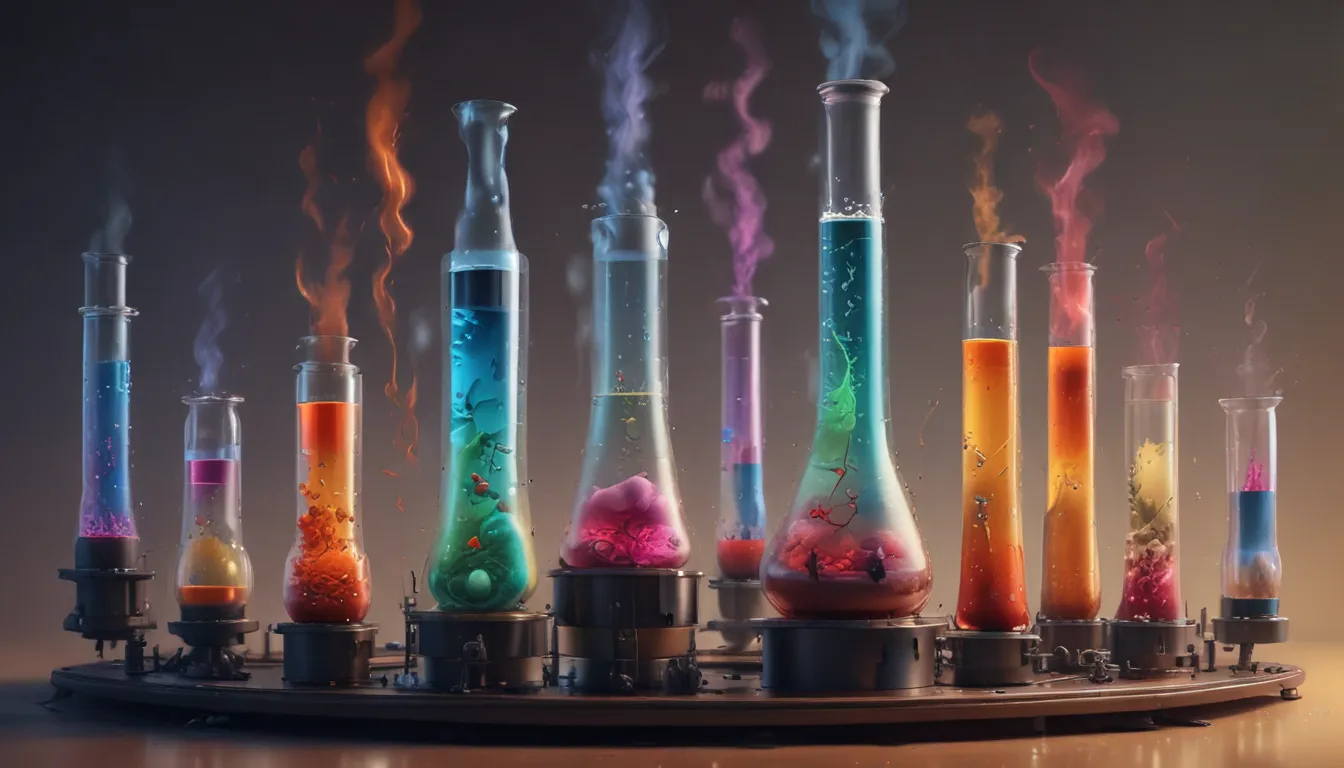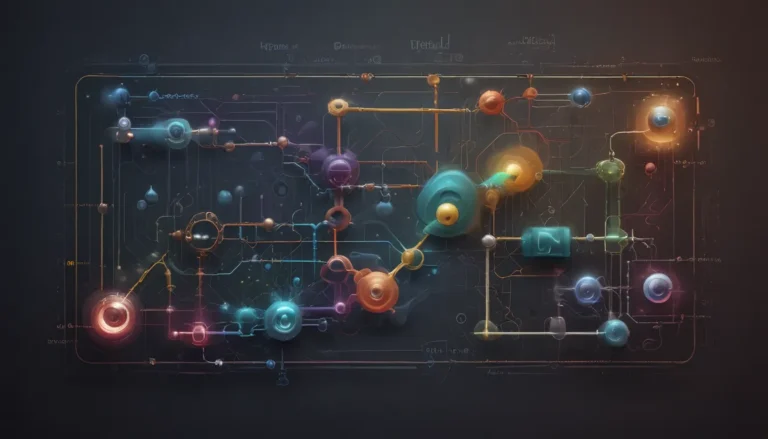A Note About Images: The images used in our articles are for illustration purposes only and may not exactly match the content. They are meant to engage readers, but the text should be relied upon for accurate information.
Gas chromatography is a widely used analytical technique that plays a pivotal role in various scientific fields, ranging from chemistry to forensics. With its ability to separate and analyze complex mixtures, gas chromatography has become an indispensable tool in modern analytical chemistry. While the basics of gas chromatography are well-known, there are numerous fascinating facts about this technique that are often overlooked. In this article, we will delve into 14 surprising facts about gas chromatography that shed light on its significance, applications, and unique features. Join us on this educational journey as we uncover the hidden wonders of gas chromatography and explore why it continues to be a cornerstone of scientific analysis.
Unveiling the Intricacies of Gas Chromatography
Gas chromatography operates on the principle of differential migration, where compounds in a mixture are separated based on their varying migration rates between a stationary phase and a mobile phase. The mobile phase in gas chromatography is unlike other chromatographic techniques as it utilizes gas, enabling efficient separation of volatile compounds. This diverse technique can analyze a wide range of sample types, including gases, liquids, and solids, making it a versatile tool in multiple industries.
Gas Chromatography in Action: Applications and Benefits
Gas chromatography boasts high resolution capabilities, achieved through the use of long, narrow columns that allow for precise separation of complex mixtures. It finds application in various sectors, such as environmental analysis, drug testing, food and beverage quality control, and even forensic investigations. By coupling gas chromatography with mass spectrometry, researchers can identify trace compounds with high sensitivity, impacting industries from pharmaceuticals to petrochemicals.
Unraveling the Diverse Applications of Gas Chromatography
Gas chromatography plays a vital role in analyzing environmental samples for pollutants, pesticides, and contaminants, ensuring environmental safety. In drug testing laboratories, it aids in detecting and quantifying drugs and their metabolites in biological samples, facilitating forensic investigations and workplace drug screening. Moreover, gas chromatography is widely used in the petrochemical industry for analyzing petroleum products, determining composition, and assessing fuel and lubricant quality.
Gas Chromatography: A Versatile Tool Across Industries
The versatility of gas chromatography extends to the analysis of food and beverages, where it ensures quality control, nutritional content determination, and contaminant detection. In forensic science, gas chromatography assists in analyzing evidence like fibers, paint chips, and arson residues, providing valuable insights in criminal investigations. Furthermore, it serves as a valuable research tool in fields such as chemistry, biochemistry, environmental science, and materials science, enabling scientists to explore new compounds and understand their properties.
Embracing the Power of Gas Chromatography
Gas chromatography holds a pivotal role in the pharmaceutical industry, where it is utilized for drug formulation, quality control, and stability testing, ensuring the safety and efficacy of medications. Its ability to analyze volatile organic compounds (VOCs) makes it effective for industrial emissions, environmental samples, and indoor air quality assessments. By aiding perfumers and fragrance manufacturers in analyzing scent components, gas chromatography contributes to product development and quality control in the fragrance industry.
Unveiling the Complexities and Advancements in Gas Chromatography
The intricate workings of gas chromatography continue to amaze and inspire scientists and researchers worldwide. With advancements in technology and methodology, gas chromatography evolves to meet the ever-growing demands of analytical chemistry. When coupled with mass spectrometry, gas chromatography unlocks new horizons in compound identification and quantification, contributing to groundbreaking discoveries and advancements across industries.
Conclusion: Embracing the Marvels of Gas Chromatography
In conclusion, gas chromatography stands as a formidable analytical technique that has revolutionized the field of chemistry. Its ability to separate and analyze complex mixtures with high resolution and sensitivity makes it an indispensable tool for researchers and scientists. By understanding the principles and applications of gas chromatography, we gain insight into the intricate world of chemical analysis. As gas chromatography continues to evolve and innovate, its significance in scientific research remains unparalleled, solidifying its position as a cornerstone of analytical chemistry.
FAQs: Unveiling the Clarifications on Gas Chromatography
Q: What is gas chromatography?
A: Gas chromatography is an analytical technique used to separate and analyze components within a mixture based on their different affinities to a stationary phase and a mobile phase.
Q: What are the applications of gas chromatography?
A: Gas chromatography finds applications in various industries, including pharmaceuticals, environmental analysis, food and beverage industry, forensic analysis, petrochemical industry, and more.
Q: How does gas chromatography work?
A: Gas chromatography operates by injecting a sample into a column, where components are separated based on interactions with the stationary phase. The separated components are then detected and analyzed.
Q: Can gas chromatography analyze volatile and non-volatile compounds?
A: Yes, gas chromatography can analyze both volatile and non-volatile compounds. Non-volatile compounds may need to be derivatized for volatility before analysis.
Q: What are the limitations of gas chromatography?
A: Some limitations of gas chromatography include difficulty in separating compounds with similar properties, sample size limitations, and the requirement for relatively pure samples.
Q: Are safety precautions necessary when using gas chromatography?
A: Yes, safety precautions such as proper ventilation, handling of hazardous chemicals, and adherence to instrument-specific guidelines are essential when using gas chromatography.
Gas chromatography’s versatility and power continue to drive innovation and discovery in the scientific community. By uncovering the hidden wonders and applications of this remarkable analytical technique, we gain a deeper appreciation for its role in advancing research and understanding in various fields. As gas chromatography evolves alongside technological advancements, the possibilities for exploration and discovery are endless, making it a cornerstone of modern analytical chemistry. Dive into the realm of gas chromatography and witness the magic of compound separation and analysis like never before.
In this rewritten article, we have highlighted the diverse applications, significance, and unique features of gas chromatography in an informative and engaging manner. By exploring the surprising facts and advancements in gas chromatography, readers can gain a deeper understanding of this powerful analytical technique and its pivotal role in scientific research. Join us in unraveling the complexities and marvels of gas chromatography as we embark on a journey through the intriguing world of chemical analysis.






